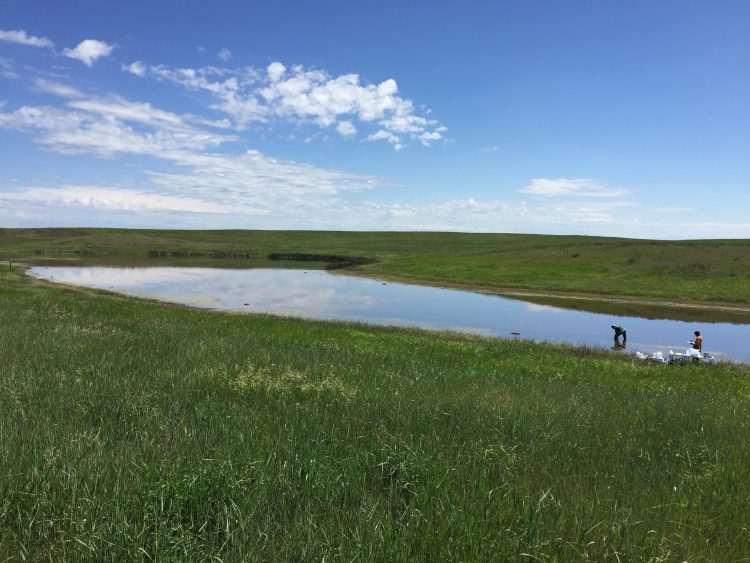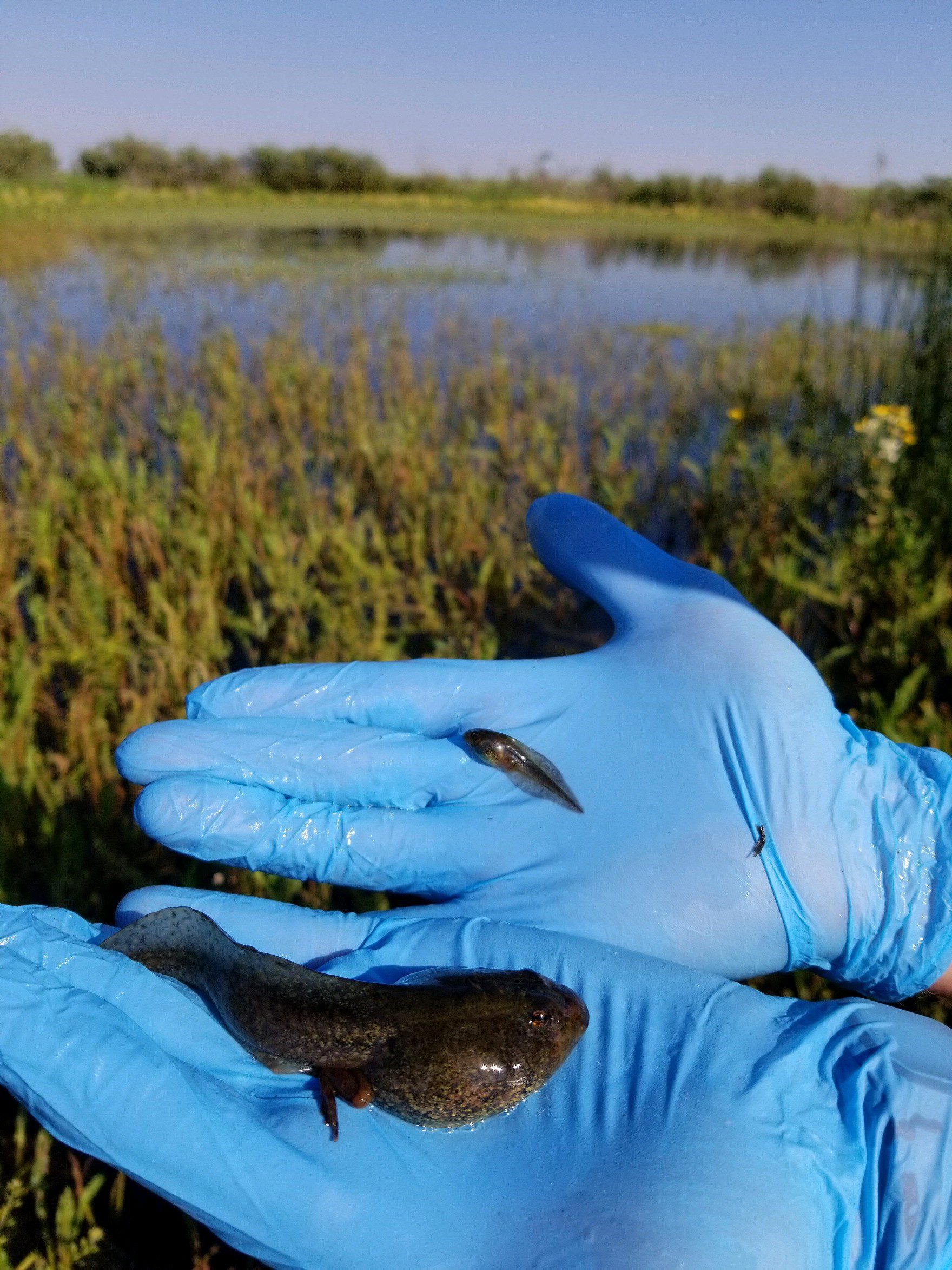USGS Research Helps Identify Impacts to Amphibians in the Prairie Pothole Region from Historic Oil and Gas Production

Advancements in wastewater disposal practices in recent years have greatly reduced ecological risks from oil and gas development, but impacts at some previous energy production sites still persist. Recent USGS research, however, may help prioritize some mitigation and restoration efforts and help with responses to future spills should they occur.
USGS scientists studied how historic oil and gas production in a portion of the Williston Basin has affected native amphibians in the Prairie Pothole Region.
Scientists looked at the barred tiger salamander, northern leopard frog and boreal chorus frog, and they also looked at metal contamination in sediments. In the sampled sediments and studied amphibians, they found metals known to occur in the saline wastewaters co-produced during energy production, as well as other metals that did not appear to be from historic oil and gas wastewater.
Feeding habits were found to affect metal concentrations in the amphibians, with wetland grazers like frogs potentially at higher risk for metal exposure, likely from ingesting sediment while feeding.
For more information, visit: http://ow.ly/hqPD50uIRNU



